Photo
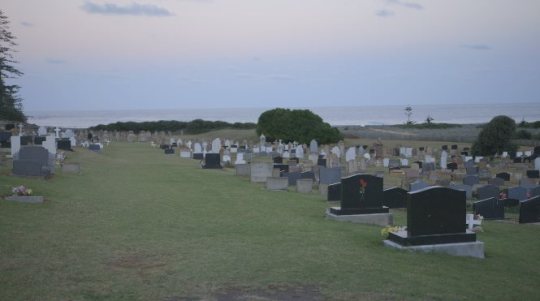
Today I went to a very special place on Norfolk Island. I'm going back at sunrise.
- Simon
0 notes
Video
youtube
Might be a good time to repost this talk Pauline gave at the Made in Oceania exhibition and convention in Cologne last year. :)
3 notes
·
View notes
Photo
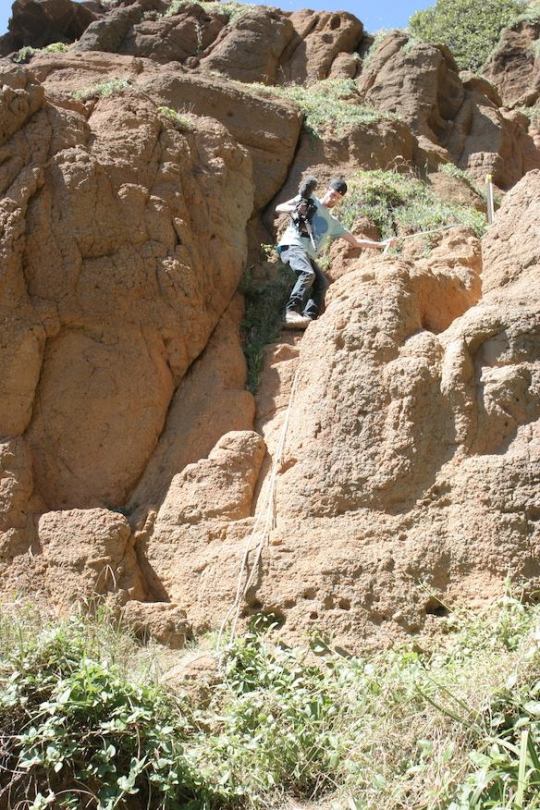
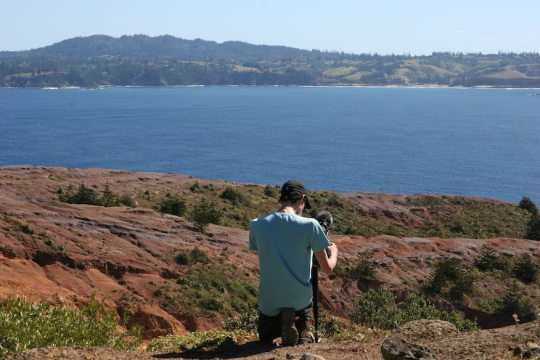
Simon Quintal on Phillip Island, being intrepid.
3 notes
·
View notes
Text
There are descendants currently going ‘Oh hey, I think we’re cousins’ on our facebook page. I am delighted :D
3 notes
·
View notes
Link
The Macleay and Nicholson Museums at the Sydney University hold a vast array of interesting artefacts. This week Mauatua, myself and Simon Quintal (filmmaker from Bounty Film ) my distant cousin...
Pauline Reynolds writes on her blog about visiting the Macleay Museum with Simon and her daughter Mauatua! Check it out.
2 notes
·
View notes
Quote
Have a moment of internet. Will try to get more. All is well here. I REALLY dont have enough time here. Tomorrow will be crazy. Picnic with 30 new family members.
Simon Quintal, straight from Norfolk Island, which is apparently amazing and full of incredible people. Can you imagine suddenly meeting an island full of your aunts and uncles and cousins?
I only let him go to Norfolk without me, he’s not getting anywhere near Pitcairn unless I’m right there as well. :P But I think this is a good way to go, give him a chance to meet his family without ‘the outsider’ tagging along. Not that I have ever felt anything but welcome among the family, but I think this chapter of the story will benefit from being as personal an experience for Simon and his loved ones.
:) Can’t wait to go see the pictures and hear all the stories.
0 notes
Text
This blog will also need a graphic overhaul soon to better reflect the change in our direction ;)
0 notes
Photo
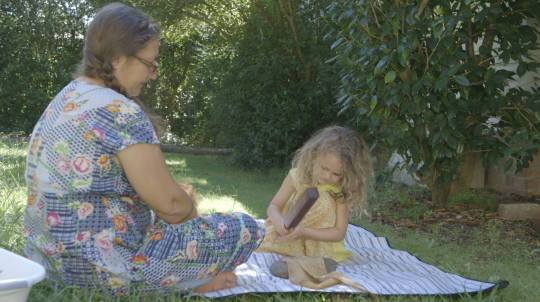
"What's the status of this project?"
Time to finally answer that question.
Allow me to wax personal for a while. When Simon and I first started working on this project together (as complete strangers connected by the same obsession), our vision of what we were going to do was different than it is today. For my part- and for some time, my part was to lead the expedition- I wanted a documentary about the mutiny, sorted through and organised to differentiate fact from assumption from outright fiction. In any quick research of the subject, you will still see events that only occurred on screen cited as fact, and the imagined reputations of fictionalised characters given as reasons for their historical counterparts' behaviour. People have heard the story over and over again and they believe in Laughton and Howard's irredeemable Bligh, in Gable's heroic Christian.
And also in the beautiful, almost enchanted, but solely decorative Tahitian girls.
Even as I was already dragging the camera through England and lugging it across continents all the way to Tahiti, I had a dreadful feeling of limitation. I knew and know a lot about the mutiny- after all, it's been my passion for well over ten years. Give me a name from the crew roster and it's likely I'll tell you a story about the man and how life and legend treated him. Ask me about the mutiny if you know nothing, and you'd best be prepared for hours of listening to the most fascinating story in the world.
(this has come in handy on long car rides)
But the further I walked, the more phone calls I made and interviews I set up, the more fearful and lost I felt. Something just wasn't right. I tried to dismiss the feeling as inexperience and social anxiety, and even as I sat in my friend's LA apartment, downing tranquilisers as I waited for the airport shuttle, I repeated to myself: you will be fine, because this is your territory. This is what you know.
That was my mantra through Security Check, at the gate, and on the flight to Papeete. It was what people had told me whenever I told them I was nervous. You know this. You got this.
Fortunately, the very moment I landed and breathed in South Pacific air mixed with the scent of tiare, I realised there was no bigger lie.
I say fortunately, because that realisation opened up a path that I had previously been convinced was too difficult to follow.
You see, I had imagined that I could gather all the relevant information in Tahiti in a few weeks, patch up the gaps in my knowledge and return home with my mutiny story finally complete and comprehensible. I knew it from the sailor's side, I'd even spent six months on board a tall ship to better understand- so all I needed was to see the islands themselves!
The gall.
I had to actually step out of the plane and walk in Tahiti to realise how ridiculous a notion that was. And that not only was there a bigger, better story to be told, but that there were people around who could tell it.
(And that I, myself, was not one of those people, and that that was actually really good news.)
The absolute turning point was October 26th in Matavai Bay, where we met a crowd of Bounty descendants and interviewed Fifi Bellais. In a quarter of an hour, she told us more about the Bounty women that I had ever read in any of the dozens of Bounty books I own.
So here we are, two years later, with an outlook that has changed. I am glad, and excited to listen and record. Simon, though reluctant to come into the spotlight at first, the humble fellow, has now taken a step forward- he is our link to the Bounty after all. As I write this, he is traveling to Norfolk with his family. Two tiny 9th generation Bounties will thus begin to discover their extended family and their heritage.
“Well, that is all very fine”, I hear you cry, “but what IS the status of this project?”
Let me try to explain.
We are still working on this documentary. Never stopped.
We simply had a long year of trying to get our heads around where we were going with it. Where it was worth taking.
And we realised we were not ready before. But we know what we need to do to BE ready.
(also, a brand new 9th gen. Bounty arrived in Simon's family last autumn, which naturally slowed things down a bit)
We are no longer focusing on retelling the story from the well-known (if distorted) point of view of the Bounty crew.
That story has been told and retold, and while it will have its place in our film, it is not the main subject.
We are instead looking at the story of how a unique community was founded through the meeting of two distant cultures.
We are looking at the Polynesian women and men who took part in the story, but who are so rarely mentioned by history.
We are looking at Mauatua, at Teehuteatuaonoa, at Teraura, at Toofaiti, to name only a few.
We are reading the imperfect record of their accounts.
We are searching for an echo of their life in the life of modern Tahiti.
We are listening to their voices through the voices of their descendants.
We are trying to see their world through the objects and crafts they have left behind.
We are trying, before we do anything else, to fill in the gaps that the average Western account leaves blank. Tahitian culture. Tahitian politics. The women and men who chose to go. The women who were kidnapped. The massacre on Tubuai. The confrontations on Pitcairn. The knowledge of Hitiaurevareva. The choices made, the ties kept, the customs broken.
A great number of people have already helped light the path for us, and we have a list a mile long of those we would still like to speak with- on Tahiti and Pitcairn and Norfolk, but also all over the world.
We know we need to go back to Tahiti and stay there for quite a bit of time, listening. We've only heard a fraction of what there is to hear. I am trying to learn Te Reo Mā'ohi, because I can't possibly progress without it. Simon is doing some pretty obsessive research into his family tree.
We've managed to charm and recruit Pauline Reynolds as our project's godmother ;) Pauline is herself a descendant of Mauatua, an 'Ahu Sista and a tremendous source of knowledge, all the more wonderful for never having stopped her research.
We are learning.
(Speaking of learning: the photograph above is a snapshot from just a few days ago. Simon Quintal’s daughter Margrete is learning how to make tapa from Pauline Reynolds, a Bounty descendant of Mauatua, whose handmade tapa cloth has been preserved in the Kew Gardens Economic Botany Collection. I chose that image to illustrate this post because there is no better way to explain why we are doing this project.)
8 notes
·
View notes
Text
Yes, we are still here, and yes, we have news, and yes, it’s exciting! Stay tuned, friends!
4 notes
·
View notes
Link
Les Haere Pō
Le soin de conserver les traditions historiques et religieuses était confié aux Haere Pō (promeneurs nocturnes). C’étaient les hommes archives. Leur charge était héréditaire. Dès leur enfance, ils apprenaient les poèmes de l’origine du monde, de la filiation des dieux, des migrations des ancêtres, des généalogies royales, des limites territoriales. Ils marchaient de nuit le long des marae, répétant à eux-mêmes, à voix haute et toujours d’un trait, toutes ces archives. Il ne devait pas y avoir d’hésitation dans leur mémoire, sinon c’était un mauvais présage. Ils [étaient] le livre vivant de la religion et de la tradition.
Charles Vernier, Tahitiens d’hier et d’aujourd’hui, Paris 1948
The Haere Pō
The task of preserving traditions of history and religion belonged to the Haere Pō (nocturnal wanderers). They were human archives. Their mission was hereditary. From childhood, they would memorise poems retelling the creation of the world, the succession of the gods, the migrations of the ancestors, the royal genealogies, and territorial boundaries. They walked at night along the marae, repeating to themselves out loud and continuously the entirety of these archives. There could never be a hesitation to their memory, for that would be an ill omen. They were the living book of their religion and tradition.
Charles Vernier, Tahitians of yesterday and today, Paris 1948
Above text from the description page of Tahitian publishing house Haere Pō. I met them in October last year. Their mission is to publish books on the Polynesian subject, and to publish them locally, in Tahiti.
They have several books for download free of charge, in English as well as in French. I’ve just downloaded Pacific Mythology. :)
1 note
·
View note
Video
youtube
Researcher, author and Bounty descendant Pauline Reynolds recently gave a talk in Cologne on tapa (barkcloth) on Pitcairn and the Bounty women. A personal story but also a unique perspective on a story not heard very often.
Pauline is kind enough to be a part of and support our documentary on the women of Bounty.
Video and edit by Simon Quintal.
0 notes
Photo

Simon in the Rautenstrauch-Joest-Museum in Cologne, working on our script. We had spent the previous day educating ourselves on the Bounty women, and paid particular attention to Teehuteatuaonoa, otherwise known as Jenny. Two well-known interviews with Teehuteatuaonoa tell the story of the Bounty after the mutiny- records of this are scarce, especially accounts given by one of the women. [x]
Of course we had to learn to pronounce and write her name, first. Pauline helped us by breaking it down; once you find the 'atua', which signifies 'goddess' or 'godly', the rest falls into place.
5 notes
·
View notes
Photo
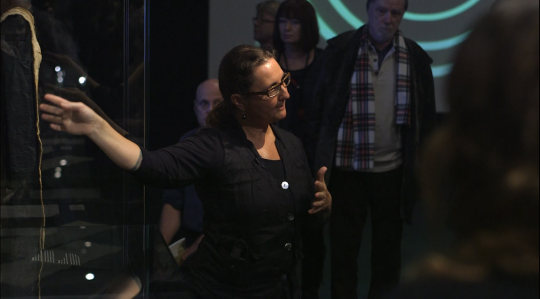
Pauline Reynolds giving her inspirational gallery talk in Cologne. She is standing in front of a Pitcairn Island Tiputa (poncho) most likely made by 2nd generation Pitcairn Islander Dinah Adams, and several pieces of Tapa Cloth (Cloth made of Bark) made by Mauatua and Teraura.
Pauline has now gone back home to Australia, and Madzia and I returned to Poland and Denmark. What a great trip. Can't wait for the next chapter in our film.
-Simon
#bounty#tapa#tapa cloth#pauline reynolds#Pitcairn#bounty descendant#Cologne#Koeln#Made in Oceania#RAUTENSTRAUCH-JOEST-MUSEUM
3 notes
·
View notes
Photo
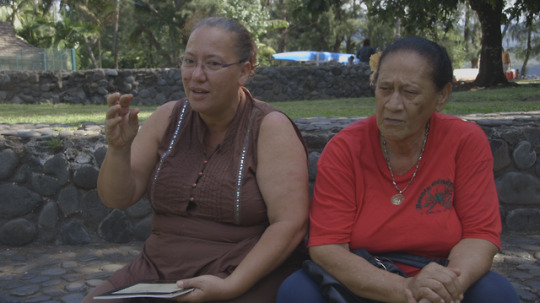
"These women were adventurous, and very strong."
And yet, very few people seem to remember their names. Fifi, a descendant of Mauatua and Edward Young, talked to us at Point Venus on the anniversary of Bounty's arrival. She spoke of her ancestors, the Tahitian women who sailed away to Pitcairn.
---
"C'étaient des femmes aventurières, et très fortes.”
Pourtant, on oublie leurs noms. Fifi, descendante de Mauatua et Edward Young nous a parlé a la Pointe Venus le jour de l'anniversaire de l'arrivée du Bounty. Elle nous a raconté l'histoire de ses ancêtres, les femmes Tahitiennes qui sont parties sur le navire vers Pitcairn.
5 notes
·
View notes
Text
Marae, tatau and coconuts
Simon and I (it's so good to finally have the amazing descendant cameraman here to take charge of the images!) went to the island of Taha'a this weekend, to meet Tihoti, a tattoo artist searching for ways to reconnect with his ancestors.
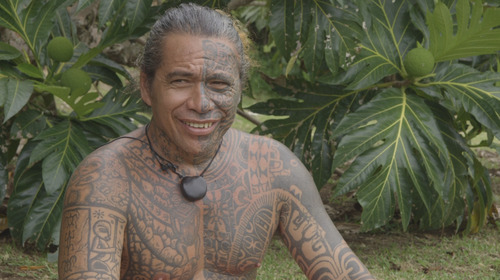
And here's a souvenir photo of our little crew: Simon, Hiti (Tihoti's cousin), myself, and Tihoti.

3 notes
·
View notes
Text
Mr Palacz's Polynesian museum
Polynesian history enthusiast and collector, mr. Daniel Palacz, tells us about why he puts so much effort and heart into recovering historical artefacts. And boy, does he have some amazing ones!!
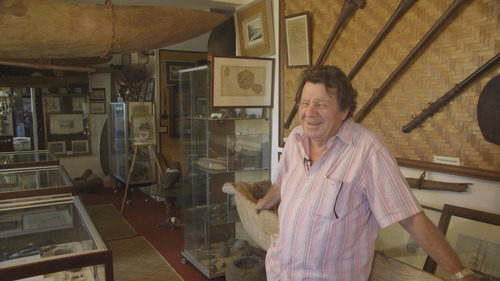
0 notes
Text
The Young Descendants
Yesterday, I had the privilege of meeting some descendants of Ida Elsie Young, herself a descendant of mutineer Ned Young and Mauatua.
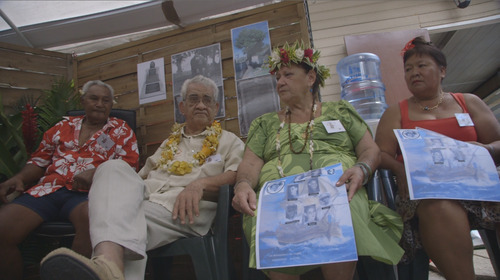
2 notes
·
View notes